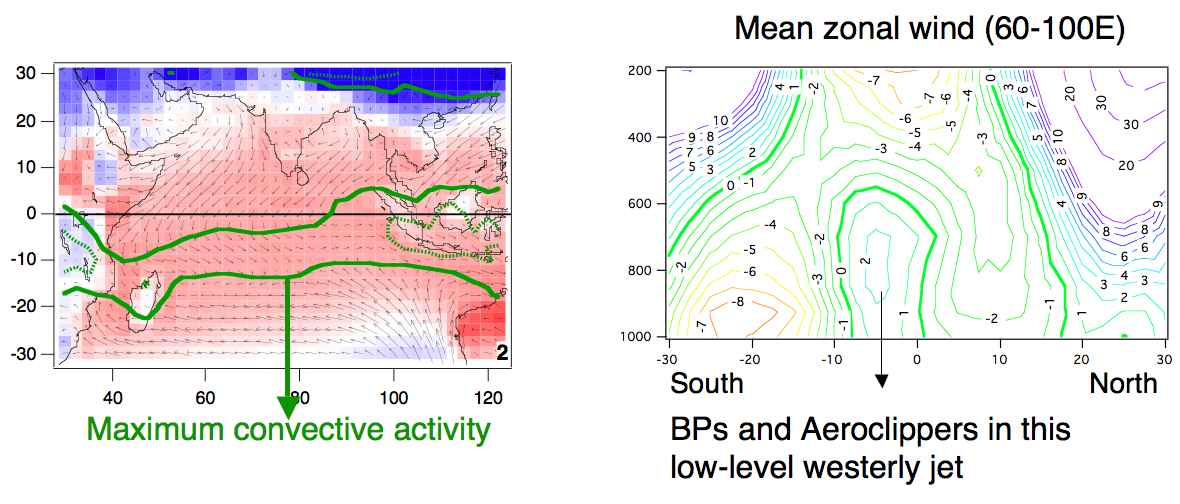VASCO
VASCO-CIRENE
CIRENE
| The Vasco Experiment |
The Vasco field
experiment is part of the Vasco-Cirene
field campaign of
January-February 2007 in the Indian Ocean south of the
equator. The Vasco measurements
are based
on two quasi-Lagrangian instruments:

(left) Average circulation, SST and OLR (green) during January over the Indian Ocean
(right) Latitude-Height section of the January zonal wind in the Indian Ocean showing the westerly jet
Pressurized balloons and aeroclipper measurements will serve as a base of validation for the meteorological fields given by ECMWF and that will be used to describe the large-scale environment for the Cirene measurements. The Aeroclipper measurements will be typically used to do the link between the precise Eulerian measurements of Cirene and the large-scale fields given by satellites and by meteorological analyses of ECMWF. These measurements will also give a statistics on the spatial homogeneity of the surface parameters and on their short time and space variability related to the diurnal cycle and to the convective precipitation events, in particular on the surface salinity and temperature and on the turbulent flux perturbations.
- Aeroclippers measuring parameters at the air sea
interface
- wind, temperature, pressure and humidity in the atmosphere surface layer
- temperature and salinity at the ocean surface
- Pressurized balloons measuring
atmospheric
parameters near the top of the atmospheric boundary layer
- wind, temperature, pressure and humidity

(left) Average circulation, SST and OLR (green) during January over the Indian Ocean
(right) Latitude-Height section of the January zonal wind in the Indian Ocean showing the westerly jet
Pressurized balloons and aeroclipper measurements will serve as a base of validation for the meteorological fields given by ECMWF and that will be used to describe the large-scale environment for the Cirene measurements. The Aeroclipper measurements will be typically used to do the link between the precise Eulerian measurements of Cirene and the large-scale fields given by satellites and by meteorological analyses of ECMWF. These measurements will also give a statistics on the spatial homogeneity of the surface parameters and on their short time and space variability related to the diurnal cycle and to the convective precipitation events, in particular on the surface salinity and temperature and on the turbulent flux perturbations.